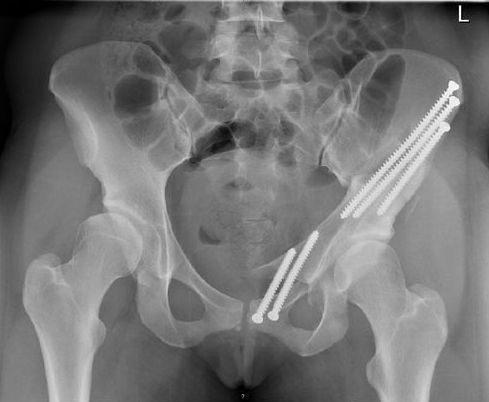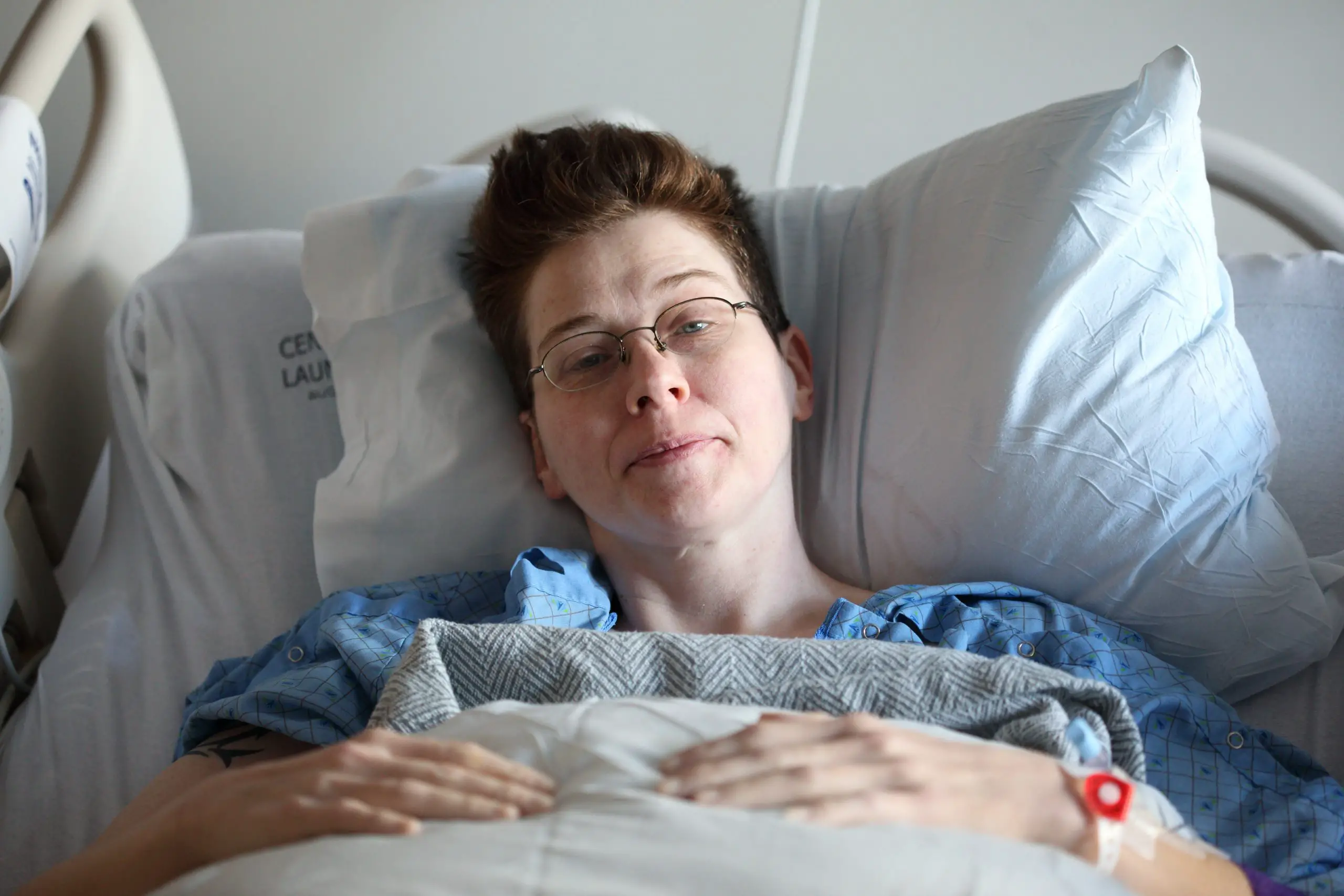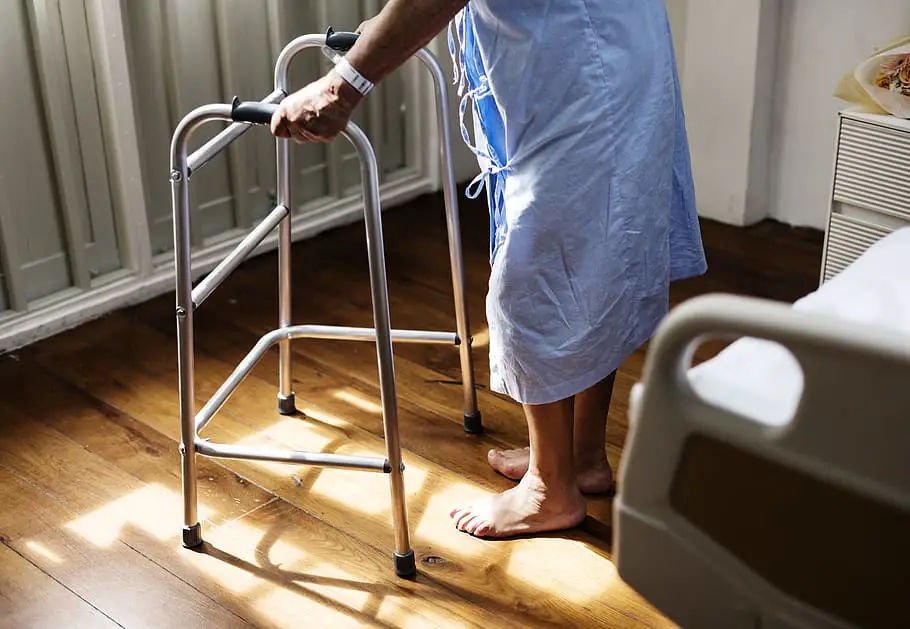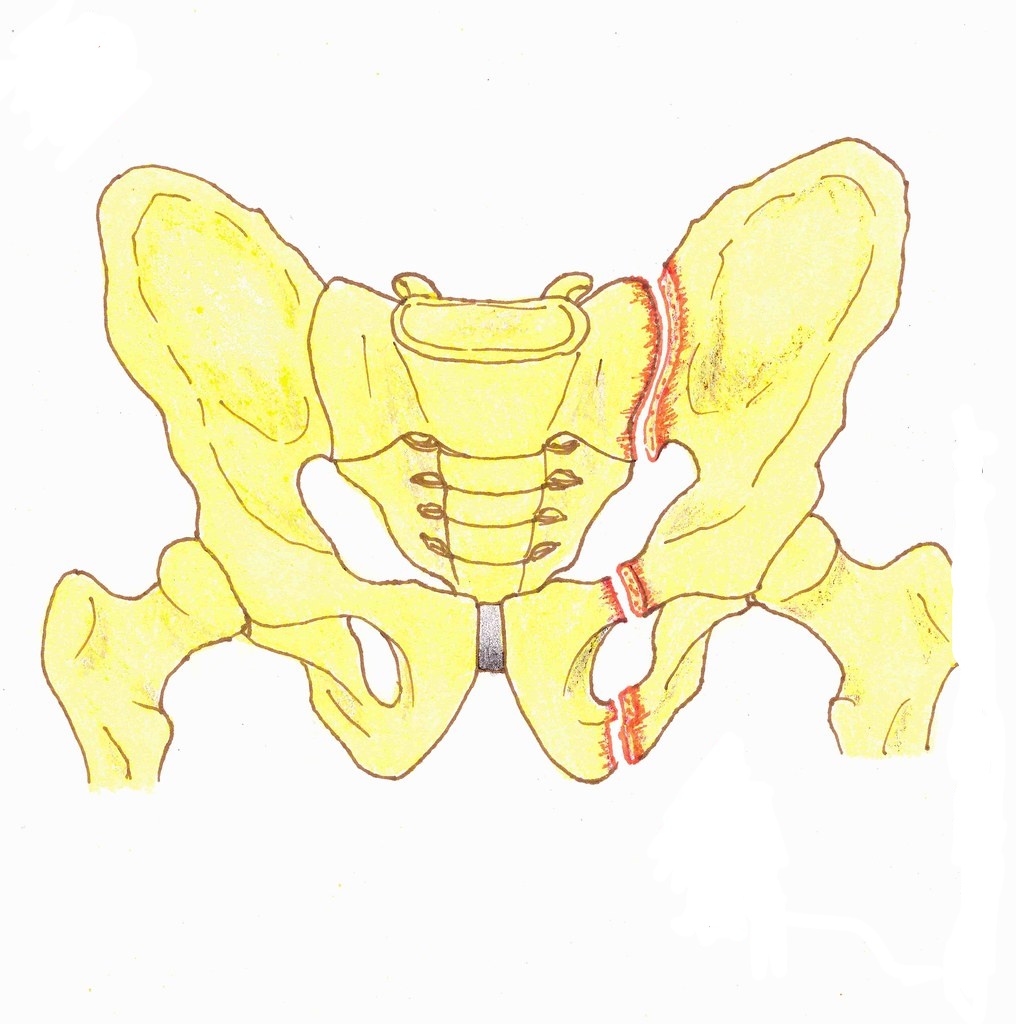The pelvic fractures, like any other fracture, can be accompanied by sequelae. These bring about changes in the patient's life. They can be morbid or even disabling, depending on many factors. Discover everything that can happen after a broken pelvis in this article.
Definition and anatomy
Le basin ou pelvic belt is the structure that connects the trunk to the lower limbs. It is formed by the iliac bones, the sacrum, the pubis and several joints.
La pelvic fracture results in the rupture of one of these bones accompanied by various lesions. Nerves, blood vessels and nearby noble organs can be affected. From these lesions, classifications of the pelvic fracture. We distinguish :
- stable lesions;
- partially stable lesions whose fracture fragments have undergone some rotation;
- unstable lesions, which are those with a complete rupture of the pelvic ring. They are among the most serious.
To learn more about the subject, you can consult the detailed article on the pelvic fracture that you will find here.
Pelvic fracture: available treatments
Le pelvic fracture treatment can be conservative or surgical. The choice is partly determined by the general health of the patient and the severity of the fracture.
Conservative treatments for a hip fracture
Le conservative treatment aims to relieve symptoms and minimize consequences in order to make life easier for the patient. These are usually:
- the medications, in particular analgesics: to reduce pain;
- the orthopedic treatments: they differ depending on the severity of the pelvic fracture.
For stable fractures, orthopedic treatments consist of functional treatment: rest for about 6 weeks. Hanging in a hammock is prescribed in case of pubic disjunction. There are also other orthopedic means such as traction and wearing a brace. They are often indicated in the elderly.
Surgical treatment
Surgery comes into play in case of serious fractures, for example when they result from violent accidents. The doctor also recommends it in cases where the basin becomes unstable. Thus, the insertion of screws or other fixators (internal or external, depending on the situation) is used to join the fractured bones. We are talking osteosynthesis.
Obviously, before any treatment, it is important to carry out diagnoses and examinations.
What are the sequelae after a hip fracture?
The presence of sequelae, as well as their nature and severity, depend on various parameters.
The type of pelvic fracture
For stable fractures, that is to say those which concern the iliac wing, the ischium, the sacrum, the coccyx, there is no sequelae considerable on the movements of daily life. This is valid provided that they are properly taken care of and especially if they do not affect the noble organs.
Unstable lesions, on the other hand, are often associated with rupture of the pelvic ring. They are then accompanied by damage to the noble organs: the vessels, the nerves (the sciatica, the lumbar plexus, etc.), the viscera. As a result, urinary sequelae and skin lesions may occur. In the worst case, they can lead to death.
The patient's condition
The sequelae also depend on everything that concerns the patient.
- The age of the patient: the sequelae differ depending on whether the patient is young or old. Indeed, the oldest people are more fragile and therefore likely to suffer from more sequelae.
- The patient's state of health and physical form: the sequelae will not be the same in healthy people, people with delicate health (osteoporotics, people with osteopenia and those suffering from cancer).
The care and treatment administered
The pelvic fracture treatments aim to prevent complications and the appearance of sequelae. If they are correctly carried out with the appropriate treatments, the sequelae are repelled.
Paradoxically, the surgical treatments can be a source of sequelae. Screws can cause discomfort. But to remedy this, it is possible to remove them. The sequelae order nerve, bone can also occur and it is highly possible that urinary problems and walking difficulties appear. Finally, it could be that the operation becomes complicated by generating infectious and inflammatory sequelae (sepsis), bleeding, nerve damage or other serious accidental errors.
Conservative treatment, on the other hand, generally causes no sequelae.
Affected organs
The manifestation and severity of sequel also depends on the affected organs.
They will be nervous if any nerves have been touched.
If they affect the urinary organs, the sequelae can be a urinary disorder, a urinary tract infection, hematuria (abnormally high presence of blood in the urine).
On the other hand, if the digestive organs are affected, there is an inflammation or even a perforation at their level (case of peritonitis for example).
The different possible consequences
- Orthopedic sequelae: malunions, inequalities of the lower limbs resulting in lameness and difficulty in walking, mechanical problems such as hip osteoarthritis.
- Nervous sequelae: paralysis, sciatica, cruralgia, etc.
- Vascular sequelae: increased risk of thrombosis due to bed rest. As a result, the patient could be suffering from a pulmonary embolism. The risks of phlebitis are also frequent.
- Psychic and psychological sequelae: the loss of autonomy caused by the fracture of the pelvis can impact the morale of the patient. Thus, he will depend on others in everything he is going to do in his daily life. The patient may lose confidence in his abilities. He may also feel helpless. Moreover, if the fracture results from violent shocks or accidents, the psychological traumas relating to fear and anxiety are not negligible.
- Obstetric complications may occur in female subjects.
- In the worst case, the fracture of the pelvis can lead to death.
Recovery and prognosis after pelvic fracture
Recovery depends on the treatment provided. It ranges from 3 weeks to 6 weeks for conservative treatments. It can last several months in those who have undergone surgical intervention. Rehabilitations are not to be neglected.
Le prognosis also depends on the patient's condition, age, fracture severity and management. For stable fractures, consolidation occurs spontaneously after a few weeks. For those that are unstable, it would take longer for there to be consolidation, provided that adequate treatments have been carried out.
Without treatment, unstable fractures have a poor prognosis. The vital prognosis is at stake in the event of serious complications.
Projects
https://sante.planetefemmes.com/quelles-sont-les-sequelles-dune-fracture-du-bassin/
http://t2econgress.com/files/127/2019/coms/20-apres-midi/Chassagne.pdf









